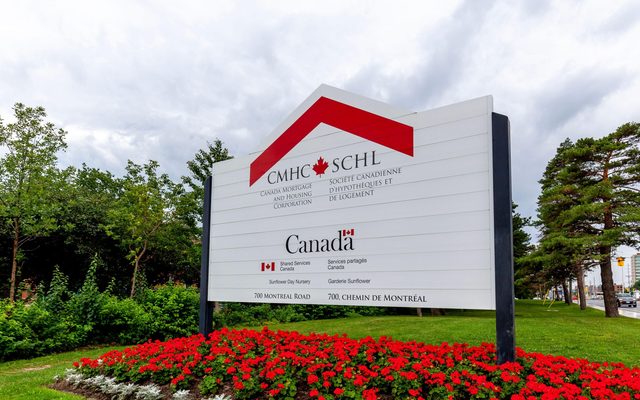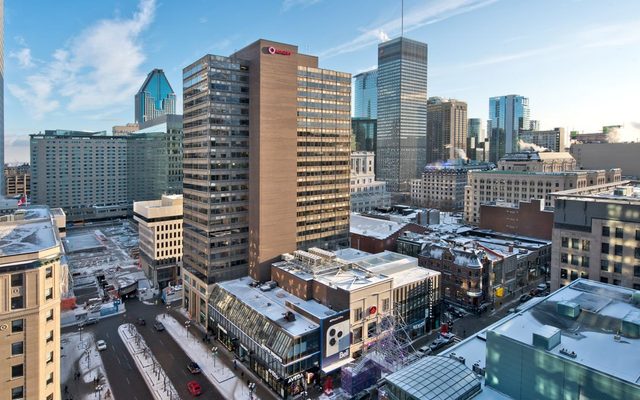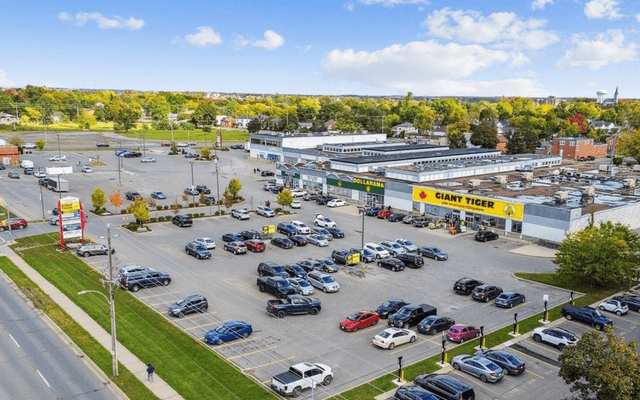- What The national office market saw positive net absorption for the second quarter in a row, CBRE found
- Why The delivery of preleased new supply helps drive the results
- What next The construction pipeline is at a 19-year low and not expected to pick up in the near term.
Canada’s office market logged the second straight quarter of positive net absorption — a first since Q1 2020, according to CBRE.
“Momentum has started to shift with eight of 10 markets posting positive absorption in Q2,” CBRE said in its quarterly Canada office report released this week. “This builds on the preceding three quarters which each had only half of markets posting gains.”
The brokerage attributed the 2.2m sq ft of positive net absorption in the second quarter to the delivery of preleased new supply. Montreal and Toronto especially benefited from that dynamic, as both markets — and the national total — would have been slightly negative without new supply in the second quarter.
Overall, the national office vacancy rate held steady at 18.5%, maintaining a narrow 30-basis points range over the past five quarters. Seven cities reported either stable or declining vacancy rates in downtown areas.
However, among downtown properties, CBRE highlighted a bifurcation between Class A and Class B/C buildings, with the disparity in vacancy rates between these categories expanding to 850 bps. Trophy properties — defined as the top-tier buildings in Calgary, Montreal, Toronto and Vancouver — are faring the best, as vacancy dropped 90 bps to 10.3% at the end of the second quarter.
“This market bifurcation is expected to persist, especially as tenants undergo flight-to-quality moves, leaving behind increasingly outdated products with little tenant interest to backfill,” the firm said in the report.
CBRE also noted that construction is at a 19-year low of 5.7m sq ft. That’s a far cry from the 10-year average of 14.6m, and activity likely won’t tick up until the current glut is absorbed.
Major markets
Montreal saw the highest net absorption rate in Canada in the second quarter at 874,000 sq ft, driven by the full leasing of the two National Bank towers. While the vacancy rate for downtown Class A properties dropped 70 bps to 17.4%, overall, Montreal’s vacancy rate ticked up to 18.8%.
CBRE executive vice president David Cervantes expects vacancy rates to continue to rise for the remainder of the year, while robust Class A assets likely will see decreased vacancy rates and continued capital expenditures.
Cervantes told Green Street News that the Montreal market is experiencing “a lot more of a comfortable view” than the rest of Canada because historical vacancy rates have consistently been in the low-teens or higher. Unlike Toronto or Vancouver, Montreal never experienced vacancy rates as low as 3%, therefore the current rates “are not as shocking to our system.”
“Our highs were never that high, so it makes us a little bit more resilient on the lows,” he said, noting that the closest Montreal ever reached to being a landlords’ market was in 2019, when vacancy was around 6% to 8%.
Toronto is starting to catch up to the rest of Canada in terms of stabilization, Shekhar Bhardwaj, research manager at CBRE, told Green Street News. The delivery of 160 Front Street, a Class A office tower, marked a pivotal addition to the city’s high-end office inventory, further driving the flight-to-quality trend among tenants.
Another positive factor for the market is a decrease in the amount of space under construction. From 2018 to 2019, Toronto had more than 10m sq ft of active construction projects, while today that figure is less than 4m sq ft. On top of that, trophy office vacancy rates are down from 7% to 5.9% year over year. Bhardwaj said both factors point toward recovery.
Meanwhile, Vancouver’s office vacancy rate rose for the second straight quarter, up 20 bps to 9.7%. The vacancy rate in downtown is 10.8%, while the suburbs are at 8.4%.
“We believe that vacancy has peaked and will begin to decrease moving forward,” Jason Kiselbach, CBRE’s managing director for operations in British Columbia, told Green Street News. “There is a significant difference in the vacancy rate depending on quality of product, and this may keep the overall vacancy elevated.”
In addition, the amount of space under construction continues to drop, with some projects changing course to either residential or lodging uses.




